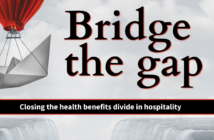by ALFREDO ORTIZ
In its wake, the Great Recession left behind neighborhoods and communities that severely lacked economic stability. But tucked in the pages of the Tax Cuts and Jobs Act – 2017 legislation that implemented pro-growth fiscal measures – was an added breath of fresh air for these areas: Opportunity Zones.
Similarly, the COVID-19 outbreak has caused uncertainty and instability. In the months ahead, Opportunity Zones will become extremely important as businesses look to rebuild, and the economy regains its footing amid economic challenges the virus left behind.
By using both federal and state tax incentives to attract long-term investment and economic activity to low-income areas, Opportunity Zones are a win for investors, business owners, and communities. Through tax incentives, Opportunity Zones encourage businesses to invest, build, and hire in distressed areas in need of an economic kick-start.
WHAT DO THE NUMBERS SAY?
There are more 8,700 designated Opportunity Zones across the country that are in need of economic reform.
A report released by the Economic Innovation Group finds that one in six Americans live in an economically distressed community. These areas are disproportionately impacted by economic downturns, losing 6 percent of their jobs and a similar amount of business establishments between 2011 and 2015. Individuals living in these areas often have a family income of 37 percent below the state median.
While the statistics are not yet available, it is understood that similar – if not higher – numbers will be the result of the most recent pandemic.
After the Great Recession, the lack of economic investment created a domino effect that led to high unemployment rates and stagnant wages. The inclusion of Opportunity Zones was a necessary addition to the Tax Cuts and Jobs Act that created a market approach to helping these communities get back on their feet. And, so far, the program has shown promise.
APPLIED SUCCESS
Individuals and businesses large and small are taking advantage of the programs. According to Novogradac, a tax-advising firm, $6.7 billion has been invested in low-income communities across the nation through Opportunity Zones.
In Ohio, otherwise taxable capital gains have been reinvested into 85 new businesses. On top of federal incentives, the Buckeye state offers an additional 10-percent tax credit, saving investors $240 million by opening businesses in Opportunity Zones. A developer in Arizona recently broke ground on a $75-million mixed-use development. This long-term investment will offer housing, offices, and restaurant space in a low-income area, sparking economic stability.
In Twin Falls, Idaho, an old clinic has been purchased with the plans to turn the Opportunity Zone area into a charter school with apartments next door. In Colorado Springs, hotels are being built in Opportunity Zones, filling a void of much-needed lodging options for the growing area.
Even small business owners benefit greatly from these incentives. In South Carolina, Victor Fuewell opened a shoe store in an Opportunity Zone. He has had such success that he plans to open a car wash next door.
Additionally, the Economic Development Administration (EDA) is granting a Pennsylvania county $5.6 million to a designated Opportunity Zone. Local stakeholders also are projected to contribute $1.4 million. It’s expected to create 240 employment opportunities and retain 1,300 jobs, improving the lives of nearly 120,000 residents.
As progress to rebuild businesses and communities continues in the coming months, Opportunity Zones will be more important than ever before. As the country returns to its normal routine, businesses and investors will be taking advantage of the incentives that this program provides.
Additionally, these low-income communities will need the support and stability of good paying jobs to help many get back on their feet. Other building projects that are in the works will provide lodging for tourists to help local economies. As the economy rebuilds, Opportunity Zones will provide a financial oasis for investors and builders who are looking for long-term ventures that will benefit them greatly in the years ahead.
THE AMERICAN DREAM LIVES ON
Opportunity Zones make the American Dream a realistic achievement for all individuals, despite where they live or their economic situation. As investors, business owners, and entrepreneurs continue to reinvest in communities that need the extra support, they are doing much more than growing their business or improving their personal economic standing; they are shaping communities for decades to come.
Small businesses, franchisees, and first-time investors should take great advantage of the financial support the Tax Cuts and Jobs Act of 2017 provided with this legislative program. Many individuals and families will benefit.
As Ralph Waldo Emerson said, “America is another name for opportunity.” Opportunity Zones help to make that characterization a reality.
Alfredo Ortiz is the President and CEO of the Job Creators Network.




